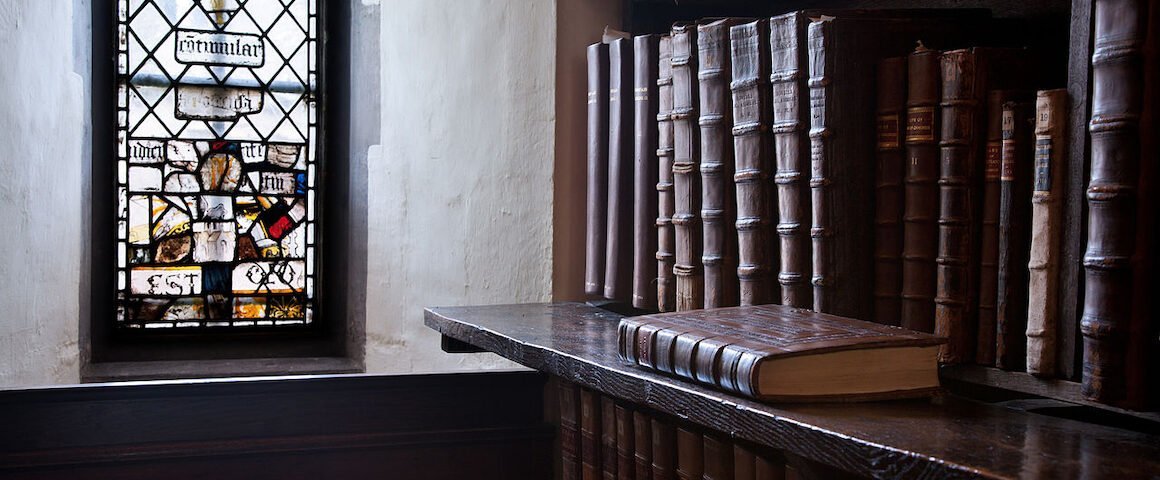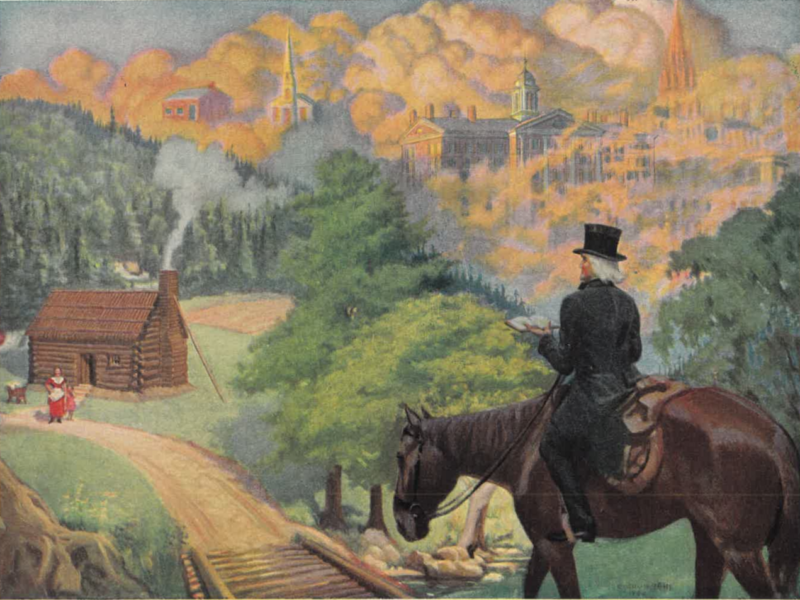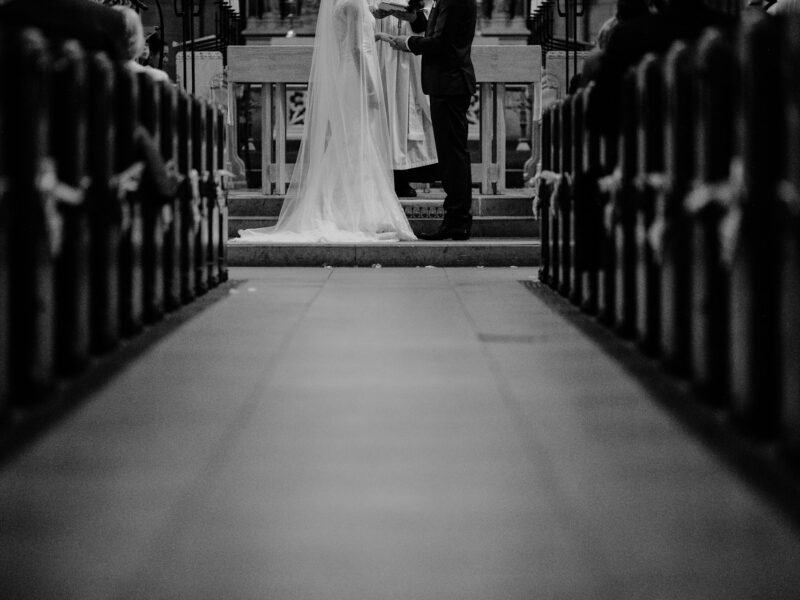While Browne acknowledges four of the minor sacraments as legitimate rites of the church, he does not extend this recognition to the anointing of the sick: “Extreme Unction is an ordinance concerning which we differ from the Church of Rome more than on the other four. We admit the proper use of confirmation, confession, orders, and matrimony; but extreme unction we neither esteem to be a Sacrament, nor an ordinance of the Church at all.”[1] Historically, the rite was performed with an eye toward “the restoration of health,” but as it has developed in the Church of Rome, “it is considered as conveying God’s pardon and support in the last hour. It is administered when all hope of recovery is gone, and generally no food is permitted to be taken after it.”[2] Although Rome teaches that the sick person “at times obtains bodily health, when expedient for the welfare of the soul” as a result of extreme unction, the primary benefit is said to be that it “cleanses away sins” and “strengthens the soul of the sick person”[3] in preparation for death.[4] In an attempt to return to the older understanding of the rite as one of healing, “The English reformers retained a form of anointing the sick in the first Service Book of Edward VI. [i.e., the 1549 Prayer Book]; though it does not appear that they attributed any sacramental efficacy to it, but merely allowed it to be used ‘if the sick person desired it,’ with a prayer for pardon of sins and restoration of bodily health.” This was removed in subsequent editions and has never been restored in the English Prayer Book tradition.[5]
A form for “Unction of the Sick” is, however, included in the American Prayer Book of 1928. That said, it differs considerably from both the Roman sacrament of extreme unction and the 1549 Prayer Book’s rite of anointing the sick, in that the use of oil is discretionary, the rubric permitting either “Anointing or Laying on of Hands” as a means of administering “the ministry of healing.”[6] Hence, the priest is authorized to say either “I anoint thee with oil (or I lay my hand upon thee),”[7] etc. Odd as it may seem that the priest may omit the very substance that is commonly thought to define the rite—namely, oil—this approach is supported by the fact that, in one of the key texts cited in support of anointing the sick (James 5:14‒15), the power of healing is clearly attributed to the prayer rather than the oil:
The gift of healing, which had been conferred on many of the first disciples, had not ceased in the church, when St. James wrote his epistle, and was probably found among the elders. The anointing with oil would naturally be used by them in the same manner as by the disciples who were first sent to preach the gospel; and it is not the oil, but the prayer, which is said to save the sick man from his infirmity.[8]
One of the chief reasons typically given by Anglican commentators for not accepting anointing of the sick even as a rite (let alone a sacrament in the fullest sense) is that miracles, including miraculous healing, have ceased in the church, and therefore anointing of the sick should cease as well: “So long…as miraculous powers remained in the Church, it was reasonable that anointing of the sick should be retained; but, when those powers ceased, it was reasonable that the unction should cease also.”[9] Yet some have defended the rite, despite the fact that the current English Prayer Book does not provide for it: “The Article does not intend to depreciate Holy Unction of the Sick, but, first, to assign to it its proper position as compared with the ‘potissima sacramenta,’ and, next, to indicate that its contemporary use was not in strict accordance with its original institution.”[10] Moreover, the objection that miracles have ceased in the church can be countered by the reality that credible reports of miracles (including cases of healing) continue to be made in the present day, albeit perhaps infrequently in the West.[11] While it may be true that miraculous healings are, on the whole, uncommon today, the rarity of such healings should not be taken to mean they have ceased altogether:
For the benefit of those who think that miraculous healing through the application of oil may still be expected, it may be added that healing the sick is most emphatically insisted upon by our Lord, and even coordinated with the preaching of the Gospel, and miraculous powers were, doubtless, imparted for this purpose by Him, and exercised for some considerable time after His Ascension. This being granted, and taking into consideration that He Himself gradually withdrew these miraculous powers, and that scientific research is highly beneficial in the development of man’s natural powers, it would seem that the Lord would have us cure our ailments now, for the most part—there may be exceptions, of course, where it is impossible to obtain medical aid—by ordinary medicinal and surgical appliances.[12]
It is therefore appropriate for the anointing of the sick to be provided for in the Prayer Book, not as a full sacrament, but as a rite of the church, in which we can pray for God’s miraculous healing when natural remedies have been exhausted.
Notes
- See also John Macbeth, Notes on the Thirty-Nine Articles (London: Simpkin, Marshall, & Co., 1894), 139, and Edgar C. S. Gibson, The Thirty-Nine Articles of the Church of England, 2nd ed. (London: Methuen and Co., 1898), 605. ↑
- See also William Beveridge, An Exposition of the Thirty-Nine Articles of the Church of England (London: James Duncan, 1830), 464; Thomas Pigot, The Churchman’s Guide in Perilous Times (London: R. B. Seeley and W. Burnside, 1835), 77; Gilbert Burnet, An Exposition of the Thirty-Nine Articles, ed. James R. Page (New York: D. Appleton & Company, 1842), 379; George Tomline, Elements of Christian Theology, 14th ed., vol. II (London: T. Cadell, 1843), 375; James Beaven, A Catechism on the Thirty-Nine Articles (Oxford and London: John Henry Praker, 1850), 79; William Baker, A Plain Exposition of the Thirty-Nine Articles (London: Rivington’s, 1883), 147; Macbeth, Notes, 135; G. F. Maclear and W. W. Williams, An Introduction to the Articles of the Church of England (London: Macmillan and Co., 1895), 305‒306; Gibson, Thirty-Nine Articles, 607‒608; Darwell Stone, Outlines of Christian Dogma, 3rd ed. (New York: Longmans, Green, and Co., 1903), 206; Arthur J. Tait, Lecture Outlines on the Thirty-Nine Articles (London: Elliot Stock, 1910), 177‒78; E. J. Bicknell, A Theological Introduction to the Thirty-Nine Articles of the Church of England, 2nd ed. (New York: Longmans, Green, and Co., 1925), 458; Massey Hamilton Shepherd, Jr., The Oxford American Prayer Book Commentary (New York: Oxford University Press, 1953), 320; Francis J. Hall, Anglican Dogmatics: Francis J. Hall’s Dogmatic Theology, vol. 2, ed. John A. Porter, Bk. IX, The Sacraments (Nashotah, WI: Nashotah House Press, 2021), 550‒51; and Gerald McDermott, Deep Anglicanism, 2nd ed. (Nashotah, WI: Nashotah House Press, 2024), 187. ↑
- J. Waterworth, ed. and trans., The Canons and Decrees of the Sacred and Œcumenical Council of Trent (London: C. Dolman, 1848), Fourteenth Session, Chapter II, “On the Effect of this Sacrament [Extreme Unction],” 105‒106. ↑
- Waterworth, Trent, Fourteenth Session, Chapter III, “On the Minister of this Sacrament, and on the time when it ought to be administered,” 106. See also Catholic Church, Catechism of the Catholic Church (Vatican: Liberia Editrice Vaticana, 2012), par. 1512, https://www.vatican.va/archive/ENG0015/__P4K.HTM. ↑
- See also A. P. Forbes, An Explanation of the Thirty-Nine Articles, 2nd ed. (Oxford and London: James Parker and Co., 1871), 474; Baker, Exposition, 147; Maclear and Williams, Introduction, 306n4; Gibson, Thirty-Nine Articles, 609‒610; B. J. Kidd, The Thirty-Nine Articles: Their History and Explanation (London: Rivington’s, 1899), 215; Stone, Outlines, 205; E. Tyrrell Green, The Thirty-Nine Articles and the Age of the Reformation, 2nd ed. (London: Wells, Gardner, Darton & Co., 1912), 198; Bicknell, Theological Introduction, 459; E. Clowes Chorley, The New American Prayer Book: Its History and Contents (New York: Macmillan Company, 1929), Chapter VIII, https://anglicanhistory.org/bcp/chorley1929/08.html; and Hall, Anglican Dogmatics, 551, 552n1. ↑
- This is also the case for the Scottish Prayer Book of 1929. The English Proposed Book of 1928 goes further and “suggests only the laying on of hands.” See Shepherd, Oxford American Prayer Book Commentary, 320. ↑
- Protestant Episcopal Church, The Book of Common Prayer (New York: Oxford University Press, 1928), 320, italics original. The 2019 Book of Common Prayer takes an unusual both-and approach—it not only requires the use of oil in its rite for “Ministry to the Sick,” but also permits the use of oil in its “Ministry to the Dying,” thereby allowing both the older and newer understandings of the rite to co-exist alongside one another (Anglican Church in North America, The Book of Common Prayer [Huntington Beach, CA: Anglican Liturgy Press, 2019], 225, 240). ↑
- Thomas Waite, Sermons, Explanatory and Practical, on the Thirty-Nine Articles (London: Baldwin, Cradock, and Joy, 1826), 372, italics original. See also Tomline, Elements, 375; Piers C. Claughton, A Brief Comparison of the Thirty-Nine Articles of the Church of England with Holy Scripture (Oxford: John Henry Parker, 1843), 88; and F. E. Middleton, Lambeth and Trent: A Brief Explanation of the Thirty-Nine Articles (London: Chas. J. Thynne, 1900), 154. ↑
- See also H. C. O’Donnoghue, A Familiar and Practical Exposition of the Thirty-Nine Articles of Religion (London: Taylor and Hessey, 1816), 219; Burnet, Exposition, 381; Tomline, Elements, 375‒76; Claughton, Comparison, 88; Baker, Exposition, 146‒47; Gibson, Thirty-Nine Articles, 606; Kidd, Thirty-Nine Articles, 215; and Middleton, Lambeth and Trent, 154. ↑
- Maclear and Williams, Introduction, 306n1. See also Forbes, Explanation, 465‒66, and Green, Thirty-Nine Articles, 198. ↑
- See, e.g., Craig S. Keener, Miracles Today: The Supernatural Work of God in the Modern World (Grand Rapids: Baker Academic, 2021). ↑
- Middleton, Lambeth and Trent, 154‒55, italics mine. Compare Shepherd, Oxford American Prayer Book Commentary, 320. ↑







'Anointing of the Sick, Then and Now [Commentary on Browne: Article XXV (3)]' has no comments
Be the first to comment this post!